Purpose:
Demonstrate how COM server (Server Type -- Service (EXE))
callbacks a COM client's API by using Connection Point.
!!NOTES:
If COM server's type is DLL, please refer
CodeProject: COM Connection Pointsabout how to use Connection Point
Preface:
(1) VC6 IDE is required
(2) This example only applies to "Service (EXE)" Server Type
(3) This COM server will use Add(..) function to describe how Connection Point is used here
Steps:
(1) Create a COM Project
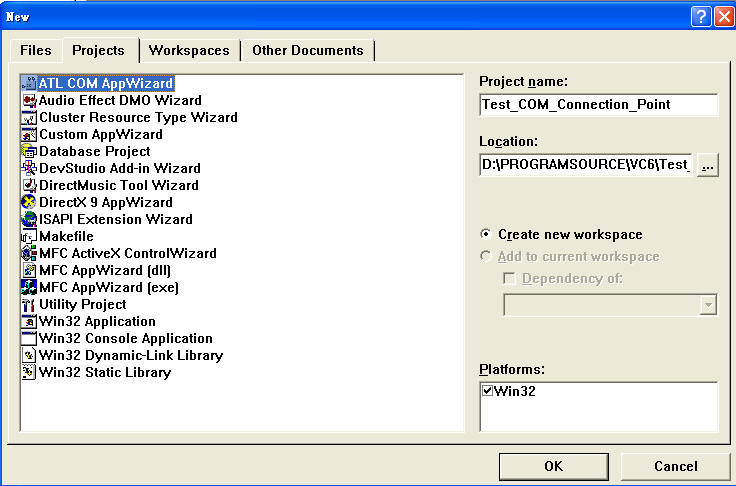
(2) Choose Service Type -- Service(EXE)

(3) Add a new ATL Object
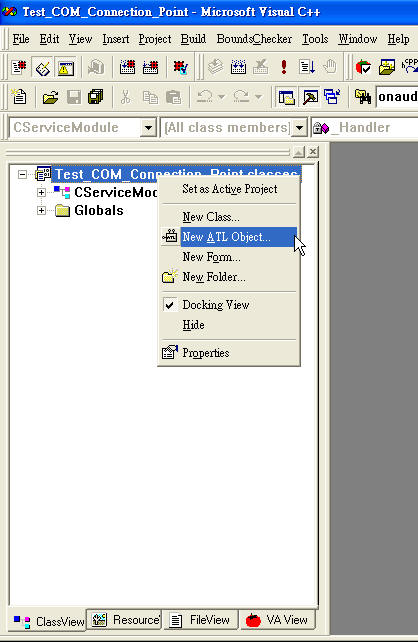
(4) create a Simple Object

(5) Fill in "Names" tab
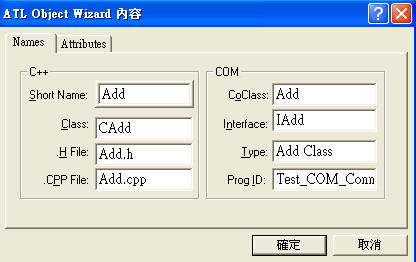
(6) Fill in "Attributes" tab. Remember to check "Support Connection Points"
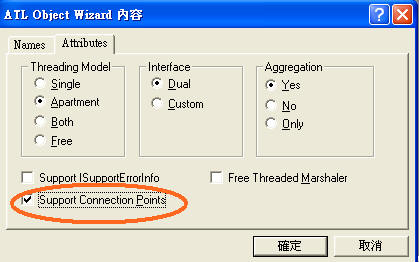
(7) Build to form "connection type" lib first
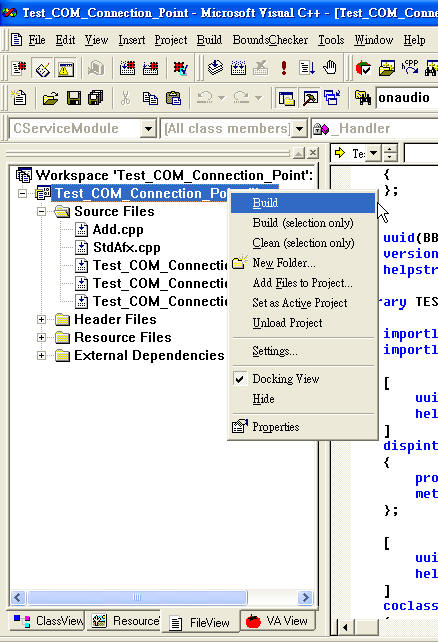
(8) implement Connection Point for CAdd class

(9) Add _IAddEvents interface
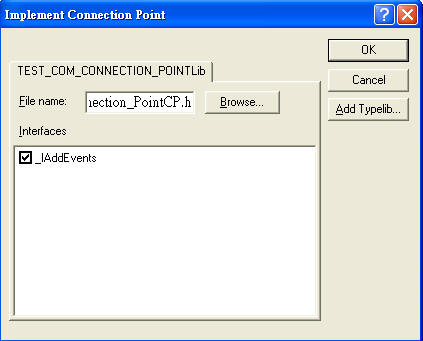
(10) Build again
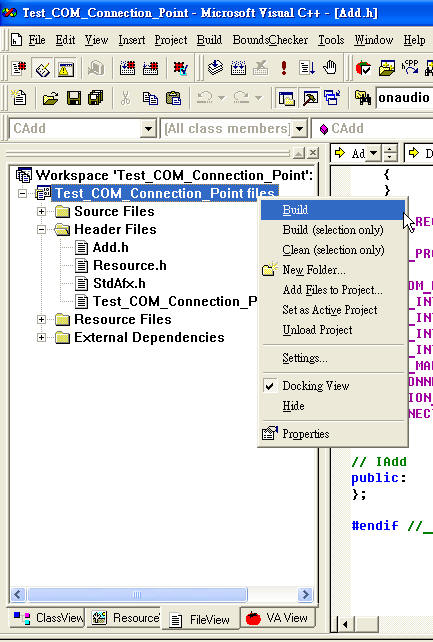
(11) fix compile errors by replacing IID__IAddEvents with DIID__IAddEvents
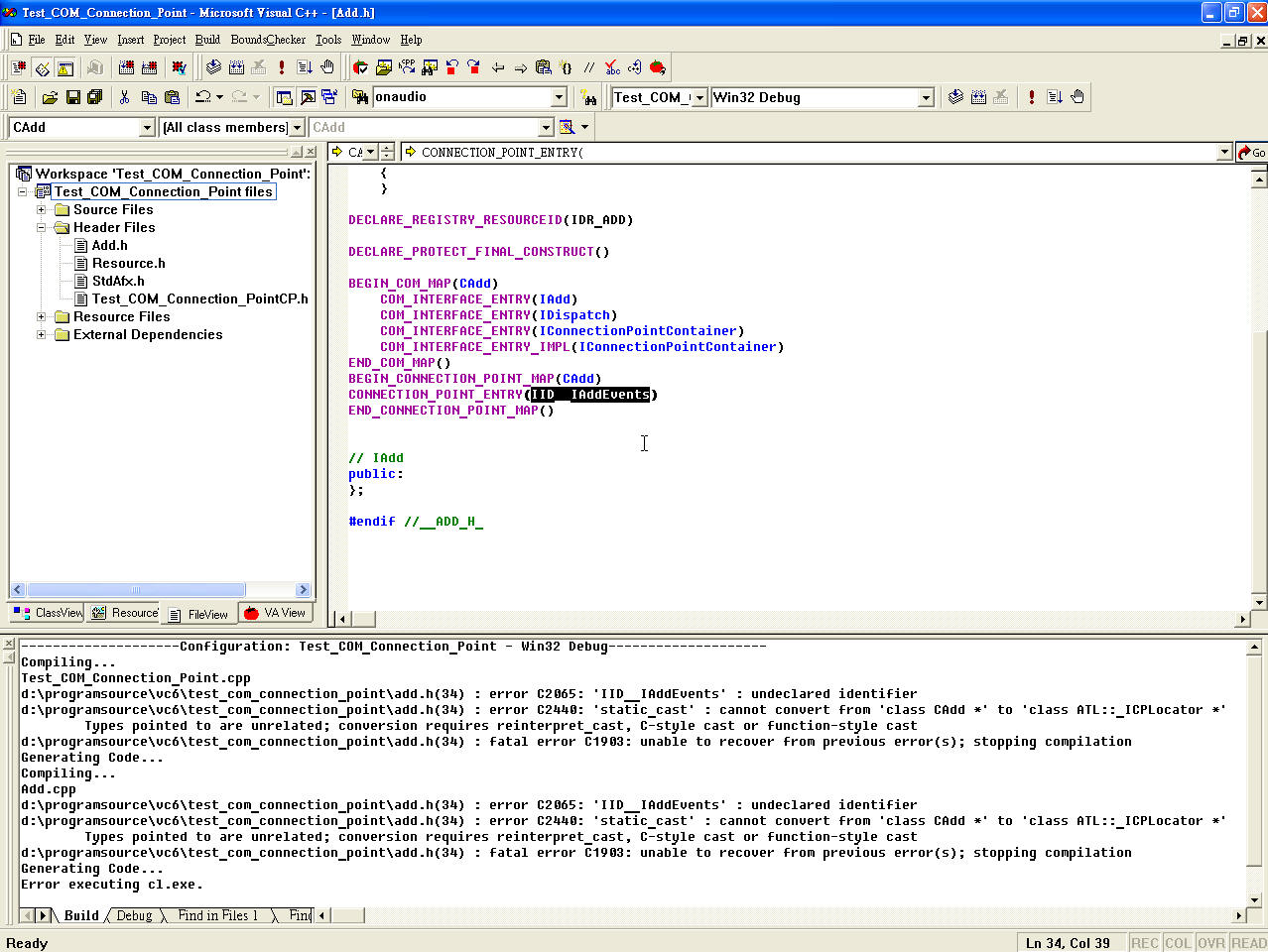
(12) Add a method -- Add -- to IAdd interface
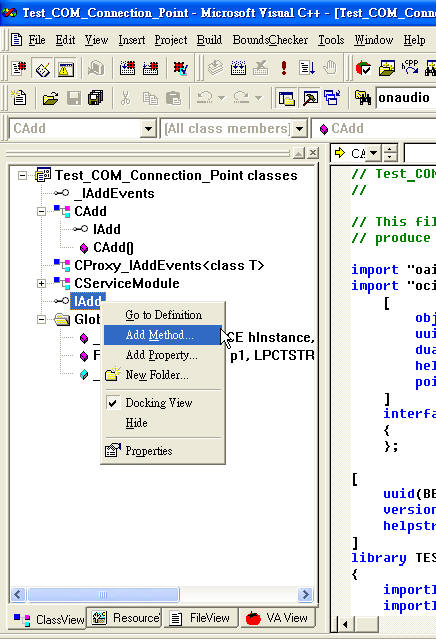
(13) Fill in the info of Add method

(14) Add a method to _IAddEvents

(15) Add a method "ExecutionOver" to _AddEvents interface
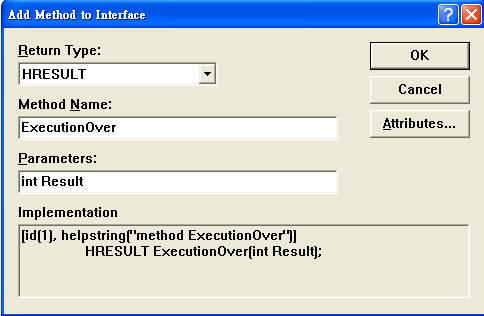
(16) Add a method -- Fire_ExecutionOver(INT Result) -- in CProxy_IAddEvents class
HRESULT Fire_ExecutionOver(INT Result)
{
CComVariant varResult;
T* pT = static_cast<T*>(this);
int nConnectionIndex;
CComVariant* pvars = new CComVariant[1];
int nConnections = m_vec.GetSize();
for (nConnectionIndex = 0; nConnectionIndex < nConnections; nConnectionIndex++)
{
pT->Lock();
CComPtr<IUnknown> sp = m_vec.GetAt(nConnectionIndex);
pT->Unlock();
IDispatch* pDispatch = reinterpret_cast<IDispatch*>(sp.p);
if (pDispatch != NULL)
{
VariantClear(&varResult);
pvars[0] = Result;
DISPPARAMS disp = { pvars, NULL, 1, 0 };
//!!NOTES: 0x1 is an ID to let COM clients tell what to do
pDispatch->Invoke(0x1, IID_NULL, LOCALE_USER_DEFAULT, DISPATCH_METHOD, &disp, &varResult, NULL, NULL);
}
}
delete[] pvars;
return varResult.scode;
}
(17) fill in CAdd:Add(int, int) to do "Add" when COM client is calling "Add" function
STDMETHODIMP CAdd::Add(int a, int b)
{
// TODO: Add your implementation code here
// Sleep(2000); // to simulate a long process
//OK, process over now; let's notify the client
Fire_ExecutionOver(a+b);
return S_OK;
}
(18) type "Test_COM_Connection_Point.exe -Service" in command mode to make sure it
can be a service as follows
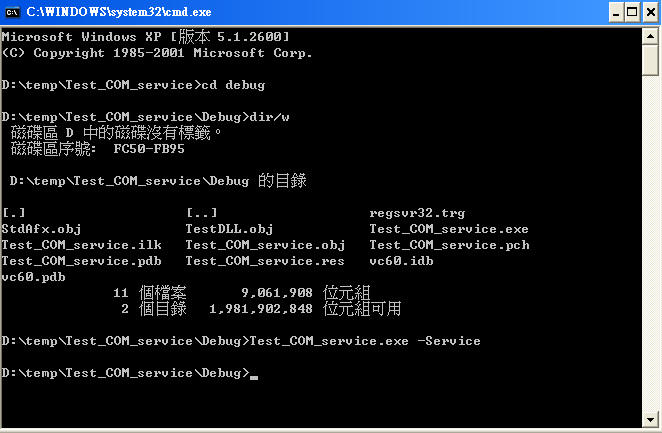
(19) type "services.msc" in command mode and enter service Window
(20) activate "Test_COM_Connection_Point.exe " as follows
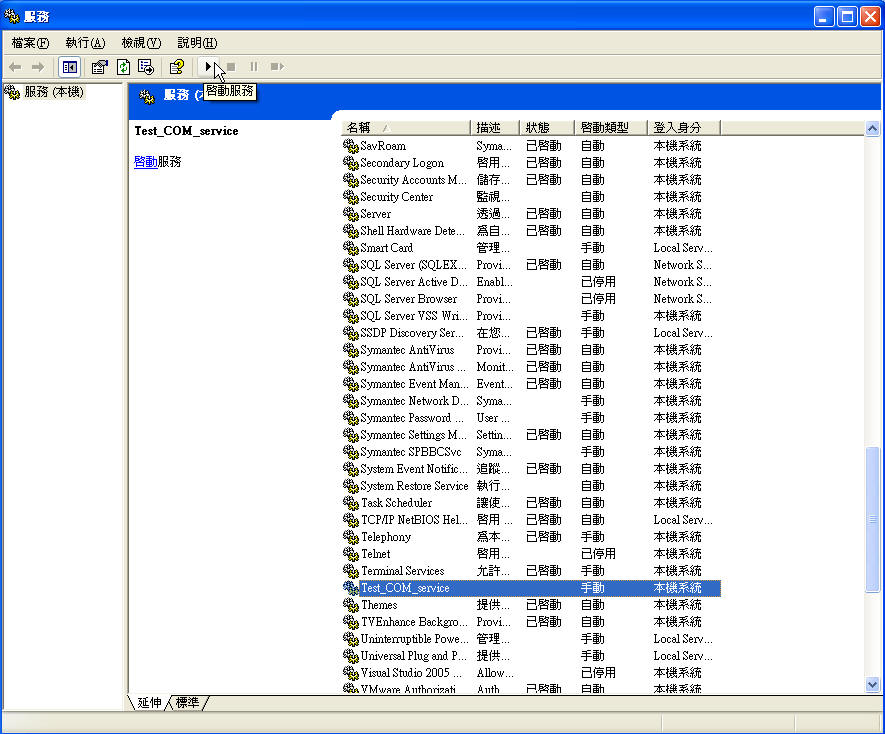
沒有留言:
張貼留言